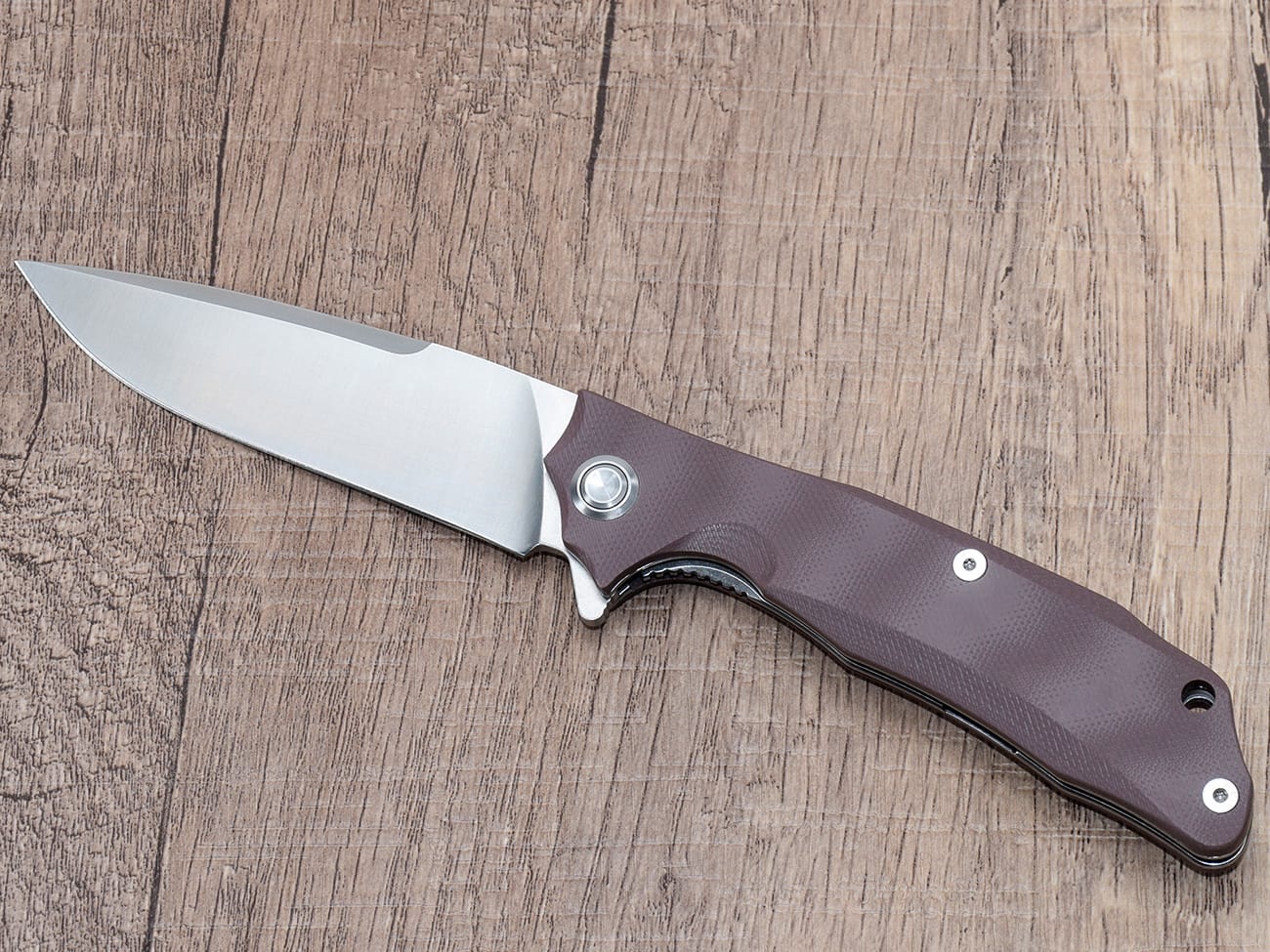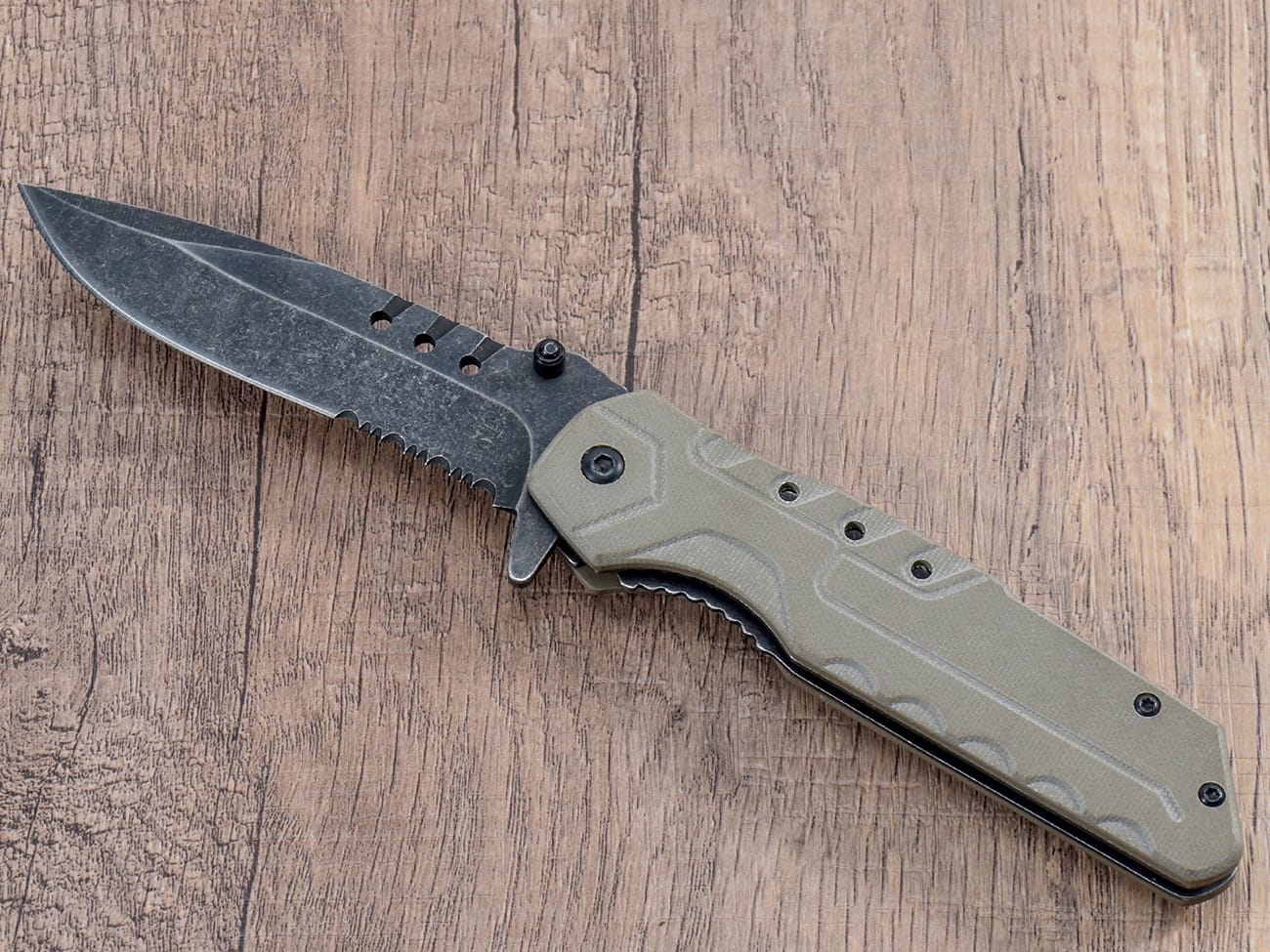Pocket knives are versatile tools that have been a staple in everyday carry (EDC) for centuries. Whether you’re an outdoor enthusiast, a DIY hobbyist, or simply someone who appreciates the utility of a good knife, knowing how to properly open your pocket knife is essential. This guide will walk you through various opening mechanisms, safety considerations, and tips to help you become proficient in handling your folding knife. From traditional nail nicks to modern flipper tabs, we’ll cover everything you need to know about pocket knife opening mechanisms.
Why is Proper Pocket Knife Opening Important?
Before we dive into the specifics, it’s crucial to understand why mastering the art of opening a pocket knife matters:
- Safety: Proper technique reduces the risk of accidental cuts.
- Efficiency: Quick and smooth opening allows for immediate use when needed.
- Longevity: Correct handling preserves the knife’s mechanism and edge.
- Legality: In some areas, how you open your knife can affect its legal status.
Now, let’s explore the various methods and mechanisms for opening your pocket knife.
What Are the Common Pocket Knife Opening Mechanisms?
Pocket knives come with a variety of opening mechanisms, each with its own unique characteristics. Let’s examine some of the most popular types:
1. How Do You Open a Traditional Slip Joint Knife?
Traditional pocket knives, often referred to as slip joint knives, are the classic folding knives many of us grew up with. These knives typically feature a nail nick for opening.To open a slip joint knife:
- Hold the knife securely in your dominant hand.
- Locate the nail nick on the blade.
- Use your thumbnail to catch the nail nick and pull the blade open.
- Continue pulling until the blade locks into the open position.
Remember, slip joint knives don’t have a locking mechanism, so be cautious when applying pressure during use.
2. What’s the Best Way to Open a Thumb Stud Knife?
Thumb studs are a popular modern opening mechanism, offering quick, one-handed deployment.To open a knife with a thumb stud:
- Grip the knife handle firmly in your dominant hand.
- Place your thumb on the thumb stud.
- Push the stud away from the handle with your thumb.
- As the blade begins to move, continue applying pressure until it locks open.
Thumb studs are ambidextrous, making them great for both right and left-handed users.
3. How Do You Properly Use a Flipper Tab?
Flipper knives have become increasingly popular due to their smooth and rapid deployment.To open a flipper knife:
- Hold the knife handle securely.
- Place your index finger on the flipper tab that protrudes from the handle.
- Pull back on the tab quickly and firmly.
- The blade will swing out and lock into place.
Flipper tabs often work in conjunction with ball-bearing pivot systems for exceptionally smooth opening.
4. What’s the Technique for Opening a Spyderco-Style Thumb Hole?
Spyderco popularized the round thumb hole opening mechanism, which offers excellent grip and control.To open a knife with a thumb hole:
- Grip the knife handle firmly.
- Place your thumb inside the round hole on the blade.
- Push your thumb forward and slightly upward to rotate the blade open.
- Continue the motion until the blade locks into place.
Thumb holes are particularly useful when wearing gloves or in wet conditions.
5. How Do You Open an Assisted Opening Knife?
Assisted opening knives use a spring mechanism to help deploy the blade once the user initiates the opening.To open an assisted opening knife:
- Hold the knife securely.
- Begin opening the blade using the thumb stud or flipper tab.
- Once you overcome the initial resistance, the spring assist will take over.
- Allow the mechanism to complete the opening action.
Be prepared for the quick deployment, and always point the blade away from yourself and others.

6. What’s the Process for Opening a Button Lock Knife?
Button lock knives offer a secure locking mechanism and often allow for easy one-handed operation.To open a button lock knife:
- Hold the knife handle firmly.
- Locate the button lock, usually on the side of the handle.
- Press and hold the button.
- While holding the button, use your thumb to swing the blade open.
- Release the button once the blade is fully extended to engage the lock.
Button locks are known for their strong lock-up and ease of use.
7. How Do You Open a Frame Lock or Liner Lock Knife?
Frame lock and liner lock knives are popular for their strong locking mechanisms and sleek designs.To open a frame or liner lock knife:
- Hold the knife handle securely.
- Use any of the previously mentioned opening methods (thumb stud, flipper, etc.) to deploy the blade.
- Open the blade fully until you hear or feel the lock engage.
- Double-check that the lock is fully engaged before use.
These locks are strong and reliable but require proper maintenance to function smoothly.
What Are Some Safety Tips for Opening Pocket Knives?
Safety should always be your top priority when handling knives. Here are some essential tips:
- Always keep the blade pointed away from yourself and others.
- Ensure your fingers are clear of the blade’s path when opening.
- Maintain a firm grip on the handle to prevent slipping.
- Be aware of your surroundings when opening your knife.
- Regularly inspect your knife for any damage or loose parts.
- Keep your knife clean and well-maintained for smooth operation.
How Can You Improve Your Pocket Knife Opening Skills?
Like any skill, opening a pocket knife smoothly and safely takes practice. Here are some ways to improve:
- Start slow and focus on proper technique before attempting speed.
- Practice with different opening mechanisms to become versatile.
- Learn to open your knife with either hand for adaptability.
- Understand the locking mechanism of your knife thoroughly.
- Consider taking a knife safety course for comprehensive training.
What Should You Do if Your Pocket Knife Won’t Open?
If you’re having trouble opening your pocket knife, consider these steps:
- Check for any visible obstructions in the pivot area.
- Ensure the locking mechanism isn’t engaged.
- Clean and lubricate the pivot and locking surfaces.
- Adjust the pivot tension if your knife has an adjustable pivot.
- If problems persist, consult the manufacturer or a professional knife maker.
Are There Legal Considerations for Opening Pocket Knives?
Legal regulations regarding pocket knives can vary significantly depending on your location. Some important points to consider:
- Some jurisdictions have restrictions on blade length.
- Automatic (switchblade) knives are often subject to strict regulations.
- The method of opening (e.g., one-handed vs. two-handed) can affect legality in some areas.
- Always research and comply with local laws regarding knife carry and use.
How Do Different Knife Designs Affect Opening Methods?
The design of a pocket knife can greatly influence its opening method and ease of use. Let’s explore some popular designs:
Traditional Folding Knives
These classic designs, like the Swiss Army knife, often require two hands to open and may feature multiple blades or tools. They typically use nail nicks for opening and don’t have locking mechanisms.
Modern Tactical Folding Knives
Tactical knives, like many Kershaw models, are designed for quick, one-handed opening. They often feature thumb studs, flippers, or assisted opening mechanisms for rapid deployment.
Gentleman’s Folders
These elegant knives, such as some custom damascus folding knives, may prioritize aesthetics over rapid deployment. They often feature nail nicks or small thumb studs for a more discreet opening method.
Utility Knives
Utility knives, like the folding utility knife with wooden handle, are designed for practicality and may have various opening methods depending on their intended use.
What Role Does Knife Maintenance Play in Easy Opening?
Proper maintenance is crucial for ensuring your pocket knife opens smoothly and safely. Here are some key maintenance tips:
- Regularly clean your knife to remove dirt and debris.
- Keep the pivot area lubricated with an appropriate knife oil.
- Tighten any loose screws, especially around the pivot area.
- Sharpen the blade regularly to prevent unnecessary force when cutting.
- Store your knife in a dry environment to prevent rust and corrosion.
How Do Materials Affect Pocket Knife Opening?
The materials used in a pocket knife can significantly impact its opening action and overall performance:
Handle Materials
- G10: Offers excellent grip, even in wet conditions. G10 handle pocket knives are popular for their durability and traction.
- Titanium: Lightweight and corrosion-resistant, often used in high-end knives.
- Wood: Traditional and aesthetically pleasing, but may require more careful maintenance.
Blade Steel
- Stainless Steel: Resists corrosion and maintains a good edge.
- Carbon Steel: Takes a very sharp edge but requires more maintenance to prevent rust.
- Damascus Steel: Offers unique patterns and good edge retention.
Pivot System
- Washers: Traditional and cost-effective, but may not be as smooth as modern systems.
- Ball Bearings: Provide extremely smooth opening action, often found in high-end knives.
What Are Some Advanced Pocket Knife Opening Techniques?
For enthusiasts looking to refine their skills, here are some advanced techniques:
- The “Spydie Flick”: A quick opening method for Spyderco-style thumb hole knives.
- Reverse Flick: Opening the knife by flicking your wrist while holding the lock.
- Slow Roll: A controlled, smooth opening using the thumb stud or hole.
- Wave Feature: Some knives have a hook on the spine that catches on your pocket for automatic deployment when drawn.
Remember, these techniques require practice and should always be performed with safety in mind.
Conclusion: Mastering Your Pocket Knife
Opening a pocket knife safely and efficiently is a fundamental skill for any knife owner. By understanding the various mechanisms, practicing proper techniques, and maintaining your knife, you’ll be well-equipped to handle any cutting task that comes your way. Remember, the key to mastery is practice and respect for your tool.
Key Takeaways:
- Always prioritize safety when handling your pocket knife.
- Understand your knife’s specific opening mechanism and locking system.
- Regular maintenance ensures smooth and reliable operation.
- Practice different opening techniques to improve your skills.
- Be aware of local laws regarding knife carry and use.
- Choose a knife design that suits your needs and preferences.
- Proper care and technique will extend the life of your pocket knife.
With these insights and techniques, you’re now ready to open your pocket knife with confidence and skill. Whether you’re using a traditional slip joint or a modern flipper, the right knowledge and practice will ensure you can always rely on your trusty pocket knife when you need it most.




